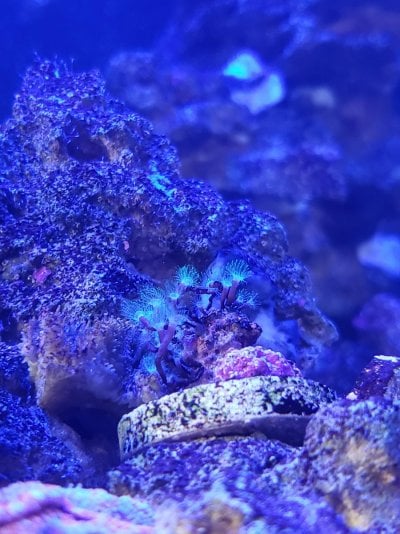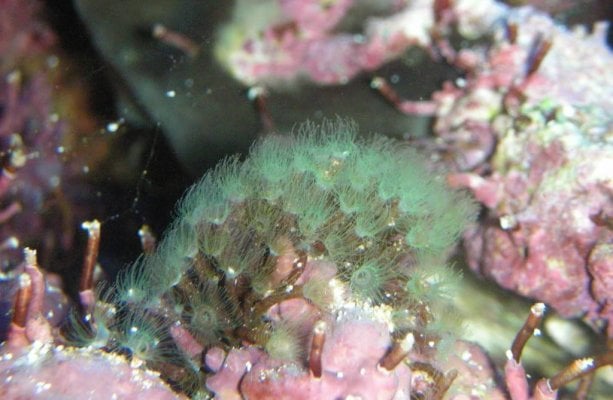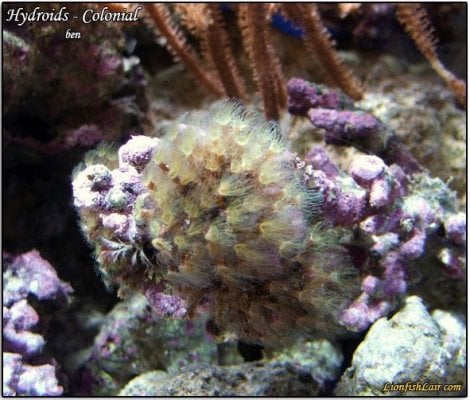I found some of these in my tank- and I'm really not convinced that they're colonial hydroids. Every single ID thread I've come across has them labeled as colonial hydroids, but based on a few observations I've made, I'm not convinced. Here are some pics of the exact type I'm talking about:



The first thing you notice is that they're bright green under the right lighting, which makes me think they're at least partially photosynthetic, which I had never heard of for a hydroid. Also, they have hard tubes, and when I blow on them with a pipette, they retract into the tube much like a feather duster. I saw somebody suggesting it was part of the class Anthozoa, which would make it either a coral or an anemone... I'm not convinced on that either. Perhaps a species name is what I'm looking for, but I haven't seen anything beyond "colonial hydroid" for these. Any help would be greatly appreciated.



The first thing you notice is that they're bright green under the right lighting, which makes me think they're at least partially photosynthetic, which I had never heard of for a hydroid. Also, they have hard tubes, and when I blow on them with a pipette, they retract into the tube much like a feather duster. I saw somebody suggesting it was part of the class Anthozoa, which would make it either a coral or an anemone... I'm not convinced on that either. Perhaps a species name is what I'm looking for, but I haven't seen anything beyond "colonial hydroid" for these. Any help would be greatly appreciated.




















